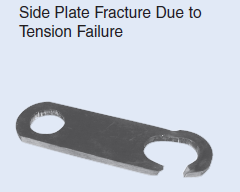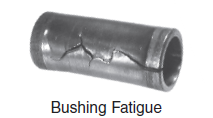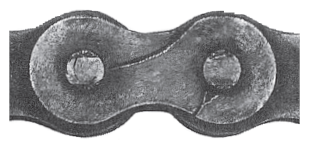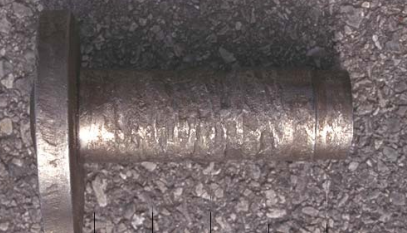PO Box: 49714, United Arab Emirates.
Email: info@seltecuae.com
- Home
- Products
Chain Care

Friction in the area between pin and bushing causes chain wear and its stretch. Proper lubrication is necessary to reduce metal to metal contact and interference at chain joints. Lubrication also provides cooling and impact damping at high speeds. It also reduces corrosion and carries away foreign matter, which is vital in abrasive environments.
The chain failure is mainly categorized into three:
- Tension Failure.
- Fatigue Failure.
- Wear.
Other less frequent chain failures are:
- Steel corrosion and hydrogen embrittlement.
- Galling.
Tension failure
Tension failure occurs when the chain is subjected to load greater than it can withstand i.e. when the ultimate tensile strength of a chain is exceeded. It can be identified by fractured side plates showing a definite yield in the metal itself. Pin fracture, either near the center of the pin or a pin shear failure between the side plates, can also be a result of tension failure.
Improper engagement between links and sprockets also leads to tension failure. Accumulation of dirt and foreign matter in the sprocket tooth pockets will prevent proper seating of the chain, creating an overload condition between link and tooth. Sprockets should be checked periodically and accumulated foreign material must be promptly removed.
Cracked bushings is another example of tension failure. Dirt or grit may penetrate the links. When it reaches the bushing surfaces, it grinds into the bushings during articulation, reducing their wall thickness and lowering chain tensile strength. Eventually the bushings crack underload.
Fatigue Failure
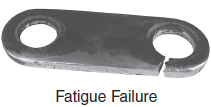
Fatigue failure occurs as a result of repeated cyclic loading beyond the chain’s endurance limit, or rated capacity. A fatigue crack starts at the point of highest stress, which is the aperture of the pin or bushing plate. Extent of the overload and frequency of its occurrence determine when fatigue will occur. The overloading can be continuous or intermittent.
Bushing fatigue is another type of fatigue failure. They appear as circumferential cracks near the bushing link plate or longitudinally along the length of the bushing. Both types of cracks may also appear in the same bushing. If bushing cracks are evident, determine and correct the cause of the failure, then replace the entire chain rather than trying to repair the chain.
Wear
Wear normally occurs in the pin and bushing load-bearing areas. The chain gradually elongates as they wear. The amount of wear depends on load, speed of rubbing, lubricant, and environment. Load-bearing surfaces of the pin and bushing will look shiny and smooth when it is properly lubricated
Proper sprocket size is also important to minimize the wear rate. For smoothest operation and longest life, use sprockets with a minimum of fifteen teeth. Because of the high angle of articulation, the wear rate is more when there are fewer teeth in a sprocket.
An easy way of identifying wear is to measure the distance between 10 chain pins and compare with the original catalogue pitch.
Stress Corrosion and Hydrogen Embrittlement
Stress corrosion failure occurs when the chain is exposed to chemicals, gases, moisture, or other possible causes. They appear as cracks which initiate at the point of highest stress and tend to extend in an arc-like path parallel to the rolling grain of the material. More than one crack will appear on a side plate. The reactions of many chemical agents with metals liberate hydrogen, which attacks and weakens the metal grain structure.
For cleaning purposes, use only detergent-free fluids. Never use acids, such as in acid bath degreasing.
Galling
Tearing away of metal particles from the load-bearing surfaces is called galling. It occurs as a result of inadequate lubrication or excessive operating speed. For eg., the mating surfaces of the pins and bushings actually weld together, then break away as the joints flex over the sprockets. Galling accelerates rapidly and is highly destructive.
Lubrication system should be checked to ensure that proper type of lubricant is being used, lubricant flow is not obstructed and lubricant is penetrating chain joints.

